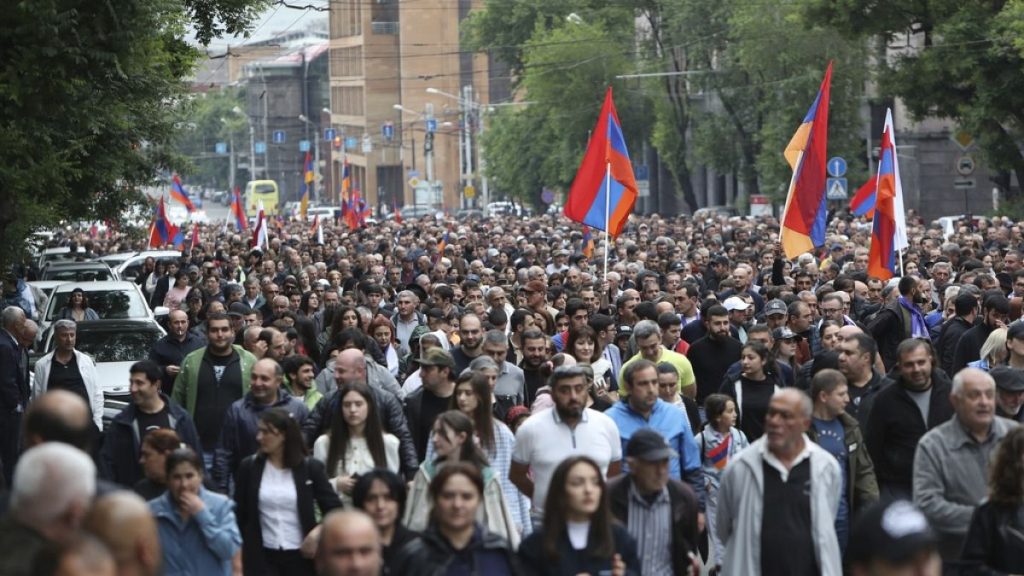Opposition to Armenian Prime Minister Nikol Pashinyan began in April when he agreed to cede control of four villages to Azerbaijan. Tens of thousands of demonstrators gathered in Armenia, led by high-ranking cleric Bagrat Galstanyan, calling for Pashinyan’s resignation following this decision. The movement, called ‘Tavush For The Homeland,’ was formed in response to the village handover but has expanded to address broader complaints about Pashinyan’s government. The decision to hand over the villages in Tavush came after Azerbaijan’s military campaign in September, which led to the surrender of ethnic Armenian separatist authorities in the Karabakh region.
As a result of the conflict, around 120,000 people, mostly ethnic Armenians, fled the Karabakh region after Azerbaijan took full control. The area had been under the control of ethnic Armenian fighters backed by Armenian forces since 1994 at the end of a six-year war with Azerbaijan. Azerbaijan reclaimed some territory in 2020 through fighting, leading to an armistice and the deployment of a Russian peacekeeping force. However, tensions remain high between Armenia and Azerbaijan, prompting Pashinyan to emphasize the need to define the border quickly to prevent further hostilities.
The ongoing protests in Armenia reflect widespread dissatisfaction with Pashinyan’s leadership and his government’s decisions, particularly regarding the handover of villages to Azerbaijan. The ‘Tavush For The Homeland’ movement, initiated by Archbishop Galstanyan, has become a platform for various grievances against Pashinyan, highlighting broader concerns about governance and national security. The conflict in the Karabakh region and the subsequent displacement of thousands of Armenians have intensified public discontent and fueled calls for Pashinyan’s resignation.
The protests in Armenia have been ongoing for weeks, with demonstrators demanding Pashinyan’s resignation and expressing their dissatisfaction with his handling of the border village issue and other governance matters. The situation in Armenia remains tense as the opposition continues to mobilize against the prime minister, with concerns about the country’s stability and security in the wake of the recent conflicts with Azerbaijan. Pashinyan’s government faces mounting pressure to address the grievances of the protesters and work towards resolving the border disputes with Azerbaijan to prevent further violence.
Pashinyan’s assertion that Armenia must quickly define its border with Azerbaijan to prevent potential hostilities reflects the precarious situation in the region and the importance of resolving ongoing conflicts to secure peace and stability. The withdrawal of the Russian peacekeeping force from the area adds to the uncertainty and heightens the urgency for diplomatic solutions to prevent further escalations. The challenges facing Armenia in the aftermath of the Karabakh conflict underscore the need for responsive and effective leadership to address internal divisions and external threats, highlighting the complex nature of the country’s geopolitical landscape.
In conclusion, the protests in Armenia against Prime Minister Pashinyan have roots in the controversial decision to cede control of border villages to Azerbaijan, which has sparked widespread discontent and calls for Pashinyan’s resignation. The ongoing demonstrations led by Archbishop Galstanyan and the ‘Tavush For The Homeland’ movement reflect broader concerns about governance, national security, and the impact of the Karabakh conflict on Armenia’s stability. The need for decisive action to address internal divisions, define borders, and prevent further hostilities remains critical for Armenia’s future, underscoring the complexities and challenges facing the country in the aftermath of recent conflicts.


